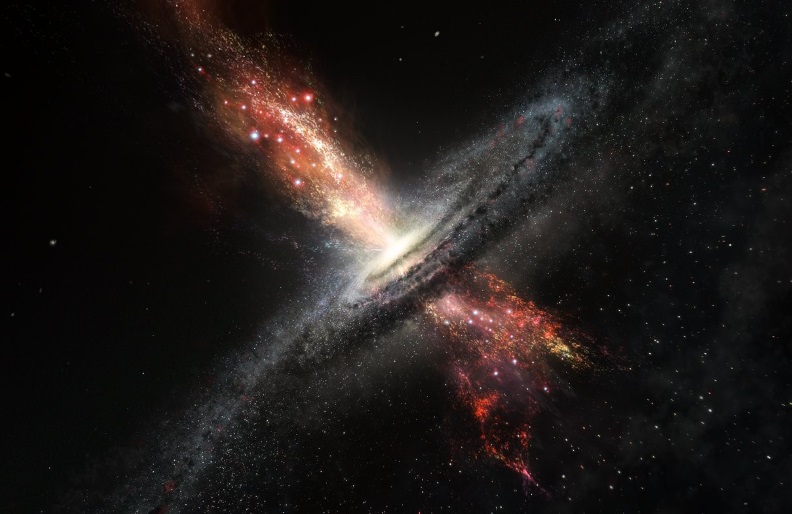Most stars are just out there in space, doing their star thing, but not the pulsar called RX J0806.4-4123. It’s been caught doing something that’s never been seen before. It’s emitting infrared radiation – and only infrared radiation – at a huge distance.
Long-distance emission from neutron stars is nothing new. But the fact RX J0806.4-4123 is the first star which has such an emission only in infrared light could mean that it could have new features seen in no other pulsar.
“This particular neutron star belongs to a group of seven nearby X-ray pulsars – nicknamed ‘the Magnificent Seven’ – that are hotter than they ought to be considering their ages and available energy reservoir provided by the loss of rotation energy,” said astrophysicist Bettina Posselt of Penn State.
“We observed an extended area of infrared emissions around this neutron star … the total size of which translates into about 200 astronomical units (or 2.5 times the orbit of Pluto around the Sun) at the assumed distance of the pulsar.”
A pulsar is a type of neutron star, which is what happens when a high-mass star comes to the end of its life cycle. The core collapses, squeezing protons and electrons into neutrons and neutrinos.
If the star is below about three times the mass of our Sun, the neutrons exert enough pressure to support a neutron star, which also have intense magnetic fields. (If the mass is higher than this, the star collapses into a black hole.)
These neutron stars spin incredibly rapidly; and, if they are oriented in just the right way, beams of radiation directed by the magnetic field flash past as they spin – like a cosmic lighthouse.
That’s what makes it a pulsar – basically, a neutron star angled a certain way (but that angle is super useful to astronomers).

They’re also usually observed in X-ray and radio emissions, since those are the wavelengths in which they tend to be strongest. An infrared signal without the other wavelengths is an oddity.
The researchers suggested two possibilities they think are the strongest candidates to explain this different emission: a disc of material around the pulsar, or a particular type of nebula.
“One theory is that there could be what is known as a ‘fallback disc’ of material that coalesced around the neutron star after the supernova,” Posselt said.
“Such a disc would be composed of matter from the progenitor massive star. Its subsequent interaction with the neutron star could have heated the pulsar and slowed its rotation.
“If confirmed as a supernova fallback disc, this result could change our general understanding of neutron star evolution.”
The other explanation is a type of nebula called a pulsar wind nebula. These are found within supernova remnants when a powerful wind from a pulsar blows back the material left over from the star’s explosion, hollowing out a cavity in the nebula.
But if it is a pulsar wind nebula, it’s of a kind that has never been seen before.
Pulsar winds are formed by particles accelerated in the electric fields of those neutron stars that have strong magnetic fields, according to Posselt.
“As the neutron star travels through the interstellar medium at greater than the speed of sound, a shock can form where the interstellar medium and the pulsar wind interact. The shocked particles would then radiate synchrotron emission, causing the extended infrared emission that we see,” Posselt said.
“Typically, pulsar wind nebulae are seen in X-rays and an infrared-only pulsar wind nebula would be very unusual and exciting.”
Now for the less exciting news: we may be in for a little bit of a wait to find out for sure. This observation was made with the Hubble Space Telescope’s near-infrared instrument. But Hubble’s primary capabilities are in the ultraviolet and the visible light wavelengths.
To get more detailed readings, we’ll probably have to wait for the James Webb Space Telescope, which will primarily take observations in infrared.
And the James Webb Space Telescope isn’t launching until 2021, unless it gets delayed again.
And now we know that there’s something up there around RX J0806.4-4123 for it to look into to help understand the evolution of neutron stars.
The team’s research has been published in The Astrophysical Journal, and can be read in full via the Hubble website.


One comment